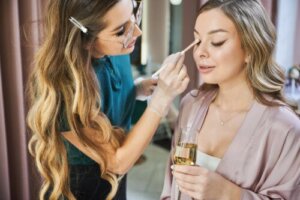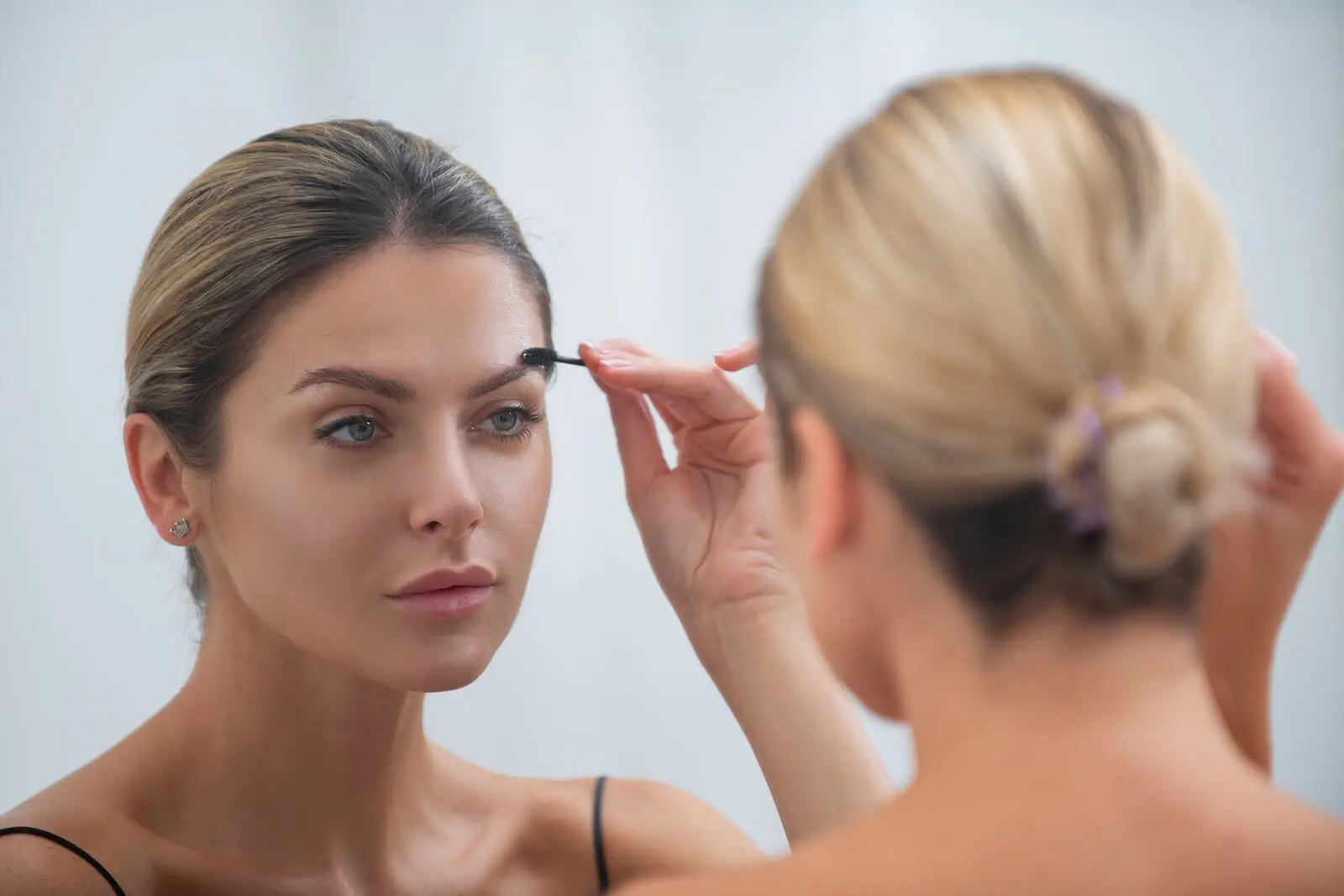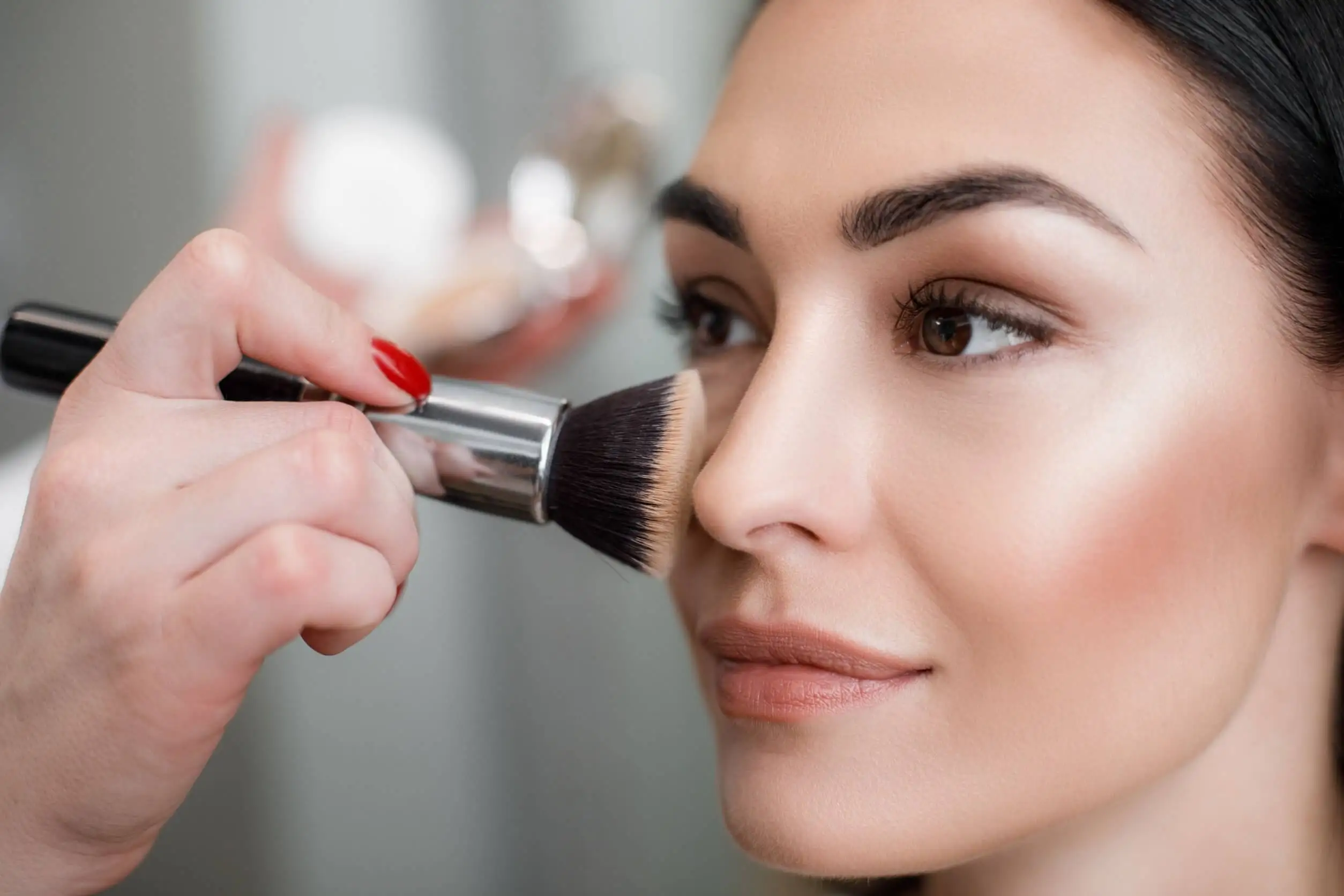What is Visagism and Why Is It Important for Makeup?

Visagism is a coined term from the terms ‘visage’ comes from French and means “face,” while the Latin suffix ‘ismo’ is equivalent to “doctrine.” Essentially, we can say that visagism is based on a detailed study of the face in order to find its strong points to highlight them with makeup.
It’s a technique widely applied in the world of fashion, as it allows each person to wear the clothes that best suit them, wear their hair according to the physiognomy of their face, and do their makeup in a way that enhances the features that best suit them. Let’s take a look at what it is and how it’s applied when it comes to makeup.
What is visagism?
Professional makeup artists face a new challenge every time they go to work. However, there are general characteristics that categorize faces as oval, round, square, and so on. This becomes a starting point for this work.
In this context, visagism is present to analyze each of the components of the face and evaluate how to make them up to achieve the best possible result. Created by Claude Juillard, it’s concerned with studying the shapes and proportions of the face as a whole in order to personalize the makeup.
Its purpose is to highlight the features and enhance the beauty of each individual. Therefore, it includes the eyes, eyebrows, eyelashes, nose, cheekbones, mouth, chin, and even the hair and figure of the person to be made up.

We think you may also enjoy reading this article: One-coat Makeup: What is this Beauty Trend in TikTok All About?
Visagism and face types
The shape of the face can be classified into several categories, always taking into account its characteristics. Three zones are taken to divide the face:
- The intellectual zone, which is measured from the scalp to the eyebrows – i.e., the forehead.
- The emotional zone, which takes into account the distance from the eyebrows to the base of the nose.
- The sensitive zone, which takes the base of the nose to the chin.
It’s important to remember that we’re always speaking in general lines and that the following classifications may vary to a greater or lesser extent.
Oval faces
Speaking in terms of makeup, this type of face would be ideal for the proportions that keep their shapes. Many makeup professionals aim to achieve a result that emulates this type of face. Any type of makeup can be applied on an oval face.
Round faces
As its name suggests, this face forms almost a perfect circle that radiates tenderness and delicacy. The techniques applied here to bring these faces closer to an oval face are to use shadows on the temples and chin. Likewise, on the contour of the forehead and the outer edge of the eyes, it’s recommended to use a base that’s a darker shade.
Square faces
In this case, the jaws and forehead are well-defined. The idea is to soften these features by applying shadow on the forehead and chin, concentrating it on the corners of the face. The makeup look should be rounded, precisely to approximate an oval face.
Elongated faces
Also called a rectangular face, this face features a square chin, well-defined temples and a jaw and the distance between the forehead and chin is significant. The goal of good makeup is to use shadows on the temples and chin.
Triangular faces
Here, the chin is visibly wider than the forehead. Shade is often used in the central area of the chin and on the sides of the forehead. Similarly, the sides of the lower jaw are illuminated, and blush is placed in circular movements on the upper part of the cheekbone.
Inverted triangular faces
This face is the reverse of the previous one: the forehead area is wide, while the chin is narrower. In this case, the eyebrows are enhanced and given an arch shape.
Like this article? You may also like to read: 13 Makeup and Hairstyle Tricks to Save Time in the Mornings
Elements of the face and visagism
As mentioned above, the face is composed of different elements, and each of them has its own characteristics.
The forehead
The forehead may be quite wide or narrow. In any case, hair is used to equalize its dimensions. In the case of wider foreheads, bangs that occupy part of its surface are used to conceal it.
As for makeup, it’s recommended to be careful with the amount of highlighter that’s applied to this part of the face. Using darker tones in the area where the scalp is born will give a feeling of narrowness.
On the contrary, narrower foreheads need to be illuminated to give an effect of width. Lighter tones and thin eyebrows are also best so that they don’t take away space from the forehead itself.
The nose
This is one of the most controversial elements of the face because, unfortunately, beauty standards establish an ideal nose that very few people actually naturally have. In the case of small noses, it’s suggested to apply light colors to the center.
It’s best to apply shade to wide noses from the end of the eyebrows to the tip. Regarding aquiline noses -which have a downward curve – it’s recommended to apply shadow on the septum and on the tip.
The chin
Some chins have an indentation that makes them more exposed. If so, a darker concealer can be used. On the other hand, elongated faces with narrow chins are best with a highlighter on the sides to widen them a bit. Finally, a wide chin will need dark tones to even out its proportions.

Visagism and its importance in makeup
Many may think that visagism only serves to unify face styles and features, and that because of this, the individuality of people is lost. However, this technique only seeks to study the type of face in detail in order to offer the makeup that best suits it. Have you put it into practice?
All cited sources were thoroughly reviewed by our team to ensure their quality, reliability, currency, and validity. The bibliography of this article was considered reliable and of academic or scientific accuracy.
- SIERRA ACOSTA, M. I. (2014). Maquillaje. Ediciones Paraninfo, SA.
- Cintero, G. (1996). Morfología y visagismo: manual técnico para peluquería. Asociación de peluqueros de Navarra.
- Vázquez Valencia, M. B. (2022). Consultorio de moda e imagen(Bachelor’s thesis, Quito).
- Draelos ZD. Facial skin care products and cosmetics. Clin Dermatol. 2014 Nov-Dec;32(6):809-12. doi: 10.1016/j.clindermatol.2014.02.020. Epub 2014 Oct 29. PMID: 25441474.
This text is provided for informational purposes only and does not replace consultation with a professional. If in doubt, consult your specialist.








